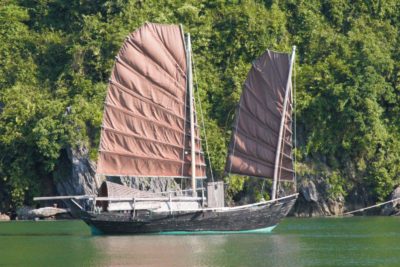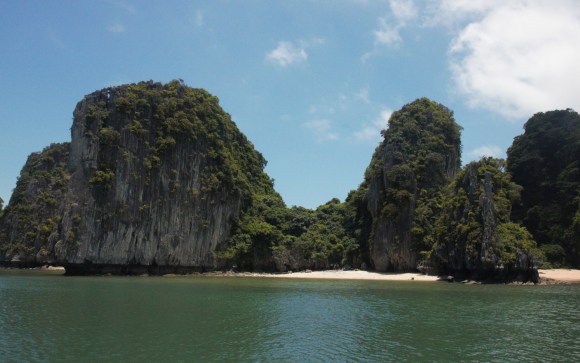Xin chào tù Việt Nam,
If you visit Uluru, you would safely expect to see Australians in the flock of gawking tourists, right? If you ride the London Eye, there’ll be plenty of Poms on board with you. And if you visit the Taj Mahal, there are thousands of Indians in the strolling crowd, along with the foreigners. In Vịnh Hạ Long (Ha Long Bay, to you) the only visitors seem to be non-Việtnamese people. Why is it so?

These are not expensive tours even by Việtnamese standards but the locals are not here. If this is said to be one of the seven natural wonders of the planet, why aren’t the Việtnamese people visiting their own marvel?
It’s a decidedly middle class precept to admire nature for what it is, rather than for what we can exploit it for. The Book of Genesis exhorted us to go out and subdue the beasts and birds etc. We were told that nature was there to be used for our benefit. It’s only long after we’ve achieved that that we sit back and take note of the natural world and seek to conserve it for posterity.

So, the obvious conclusion by some is that Việt Nam – a developing country with lots of rural poverty – won’t contain the requisite middle class who have both the time and money to worry about such luxuries as the environment. I don’t think this is a satisfactory explanation.
Here’s my rider: We’ve been here for ten days only, so these observations have limited veracity; granted.

Whilst some economists might still categorise Việt Nam as a Third World country, we don’t get that impression at all. These guys are long past satisfying the basics. They are presently enjoying the best period of prosperity in the country’s long history, thanks in large part to the heroic efforts of Hồ Chí Minh.
middle class = travellers
The cities are thriving metropolises and the nation is a net exporter. The airports – domestic and international – are very busy, and many of the travellers are local, doing more than business trips in most cases. Essential services like health and education are in good shape. So, why not middle class?





The people here are possessed of a very strong work ethic. They have always worked long hours and instead of replacing their newfound wealth with time off, they just seem to keep on working. The average standard of living is rising, up to unprecedented levels. Perhaps there’s inertia at work here. The old habits will change but the people aren’t yet translating these opportunities into a time-rich culture (like that enjoyed by the western societies for the past 50 years or more) which has an interest in matters other than mere survival.

Vịnh Hạ Long warrants its status as a must-see destination. It is much bigger than we envisaged (1550 square kilometres) and holds some great surprises, like the nationalised pearl farm (“owned by the Việtnamese people”’ explained Đưong), the isolated sandy beaches and the limestone caves. We’ve had a terrific three days on the clear green waters surrounded by the 1969 rock islands, all of which appear to be uninhabited and undisturbed. Linda’s highlight: kayaking and swimming. Mine: the serenity in amid the tall rock islands on our beautifully-appointed boat. Hạ Long means descending dragon and it’s a beautiful place.

not yet “loved to death”
Apart from the floating rubbish (alleged to come from the busy shipping lanes off the coast) there’s no evidence that Vịnh Hạ Long is being loved to death, just yet. Lots of tourists are enjoying the same tremendous experience but very few of them are Việtnamese. It’s definitely not a case of “Ho hum” on their part; most Việtnamese people have never even been here. They’re simply too busy just yet to be turning their attention to the environment and their own deliberate appreciation of same. That will no doubt come. At their rate of progress it will be sooner rather than later. In the meantime, the logical imperatives of the tourist industry will maintain some sense of conservation. Thank goodness for that.
Hẹn gặp lại tù Vịnh Hạ Long
Greg
Other photos from hereabouts







